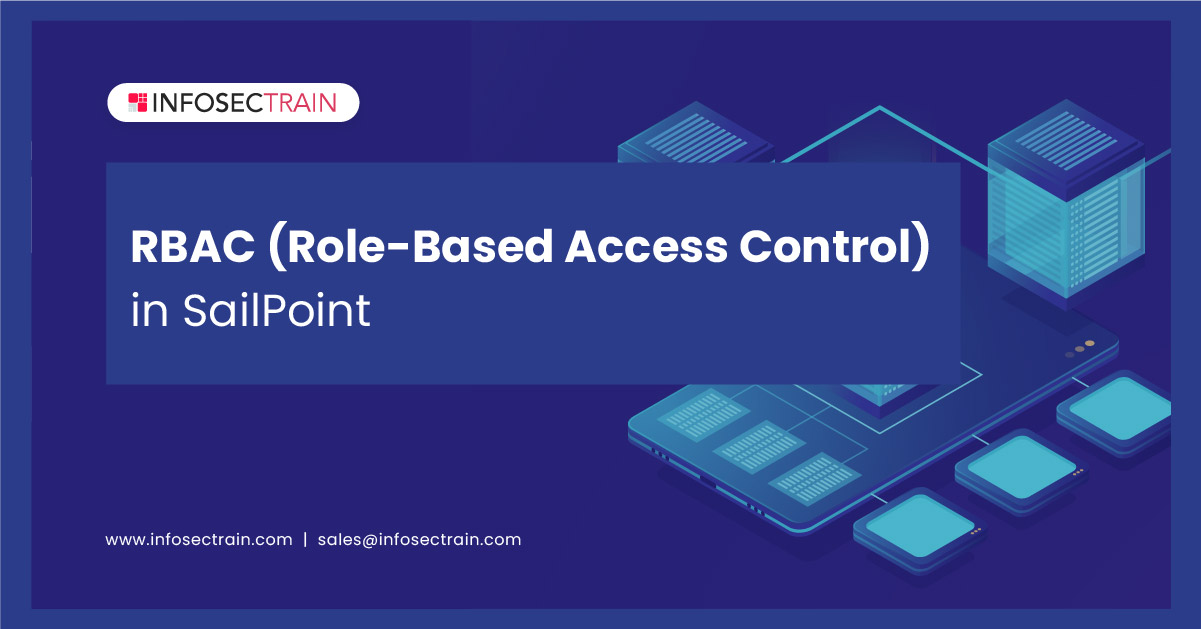RBAC (Role-Based Access Control) in SailPoint
Identity and Access Management (IAM) is now a critical component of any organization’s security policy. IAM helps restrict your organization’s exposure and decreases risk by ensuring that only the right personnel access specific systems and data. Role-Based Access Control (RBAC) is a strategy used by many IAM systems to assign rights for who can do what within specific IT roles like applications, based on the organization’s structure and the users’ roles.

Table of Contents
What is RBAC in SailPoint? How Does it Work?
Benefits of RBAC for Organizations
RBAC Models
What is RBAC in SailPoint? How Does it Work?
A Role-Based Access Control model in SailPoint offers a Role-Based mechanism. In any organization, entitlement in SailPoint is not left alone. When anyone joins an organization, they will find a particular job role in that organization. SailPoint architecture offers two-tier of Role-Based modeling.
- Business Roles
- Mapped IT Roles: Entitlements or permissions
In SailPoint, entitlements or permissions serve as the foundation for role modeling. We logically organize entitlements into role models when we link entitlements and encapsulate entitlements inside a role model.
Business roles are generic roles that a user can join, such as Manager or Security Analyst. We’ll map the IT roles required to execute their jobs inside each of these roles. If a Manager joins an organization, he must access the following applications (app1, app5, app7, app8, and app10). The access is automatically encapsulated if the organization assigns this manager job role to someone else. As a result, when a new member joins an organization, they are allocated a business role, and whatever access is encapsulated will automatically be assigned to them.
These access privileges are given to the user automatically. A business indicates their entitlement further inside each of these applications. For example, if they are given access such as reading access or execution access, then by default, it goes in birthright positioning. When you provide a specific person a business role one by one, all of the encapsulating access will be provisioned automatically. It signifies that businesses have centralized entitlements into a defined job in any organization, indicating that they prefer one to several mappings and concentrate on how access is governed. Control Association is used to map IT roles within business roles.
Control Association: When we map business roles in a permitted or required manner, any mapped IT roles will be assigned automatically. And anything a user has marked as permitted will allow them to request those positions.
In short, RBAC (Role-Based Access Control) enables users to create and enforce restricted access by assigning a set of permissions. Permissions are assigned based on the level of access that specific user profiles need to perform the job. In other words, depending on their job role and tasks, different people in any organization may have different kinds of authorized access.
Benefits of RBAC for Organizations
RBAC has various benefits for organizations:
- Centralized access: Any business can use RBAC to create centralized access. This means you’ll be able to view what roles your end users have been assigned when you log in. Alternatively, you’ll be able to see which business roles have been assigned and which IT jobs have been detected. This is because IT roles are linked further inside business profiles.
- Role information: By opening identity cubes, you will receive a perspective of 360-degree access. It means you have access to the specific job role and also know what can and cannot be done in your organization.
- Compliance information: Compliance information refers to how well your identification adheres to your enterprise’s standards and risk modeling. In SailPoint, you can govern access and define policies in your organization. In SailPoint, RBAC improves compliance with regulations such as HIPPA, SOX, GDPR, etc.
- Reduce third-party risk: RBAC in SailPoint reduces third-party risk by assigning predetermined roles to external users such as vendors and business partners.
- Use the least privilege policy: RBAC maintains the “least privilege” principle by automatically changing access permissions when roles change.
RBAC Models
The RBAC has four models:
- Core RBAC: The core or basic RBAC has three main elements: user, roles, and permissions. This model works as a one-to-many mapping principle, which means that multiple users could have the same job role and that a single user can have various job roles.
- Hierarchical RBAC: Hierarchy that establishes the relationship of seniority between the various jobs is the fourth component of RBAC models. You remove repetitions such as declaring specific permissions when jobs coincide by automatically allowing senior roles to obtain junior roles’ privileges.
- Static Separation of Duty (SSD) Relations: A user who is a member of one position cannot be assigned membership to another role with a conflict of interest.
- Dynamic Separation of Duty (DSD) Relations: DSD (Dynamic Separation of Duty) controls the rights enabled during that session since a user may require a different level of access depending on the job executed during the period.
SailPointIQ with InfosecTrain
Using RBAC significantly improves your capacity to manage access, which improves security and compliance and adds efficiency to your IT processes. If you have or are planning an IAM strategy, responsibilities will eliminate repeated chores and manual tasks.
The InfosecTrain SailPoint IdentityIQ-Admin and Developer training course is designed to teach advanced knowledge of the IAM solution through a broad blend of practical and theoretical learning. So, join InfosecTrain to learn about the abilities required to become a professional capable of managing and creating SailPoint solutions for your enterprises.




 1800-843-7890 (IN)
1800-843-7890 (IN) sales@infosectrain.com
sales@infosectrain.com
 1800-843-7890 (India)
1800-843-7890 (India) 
